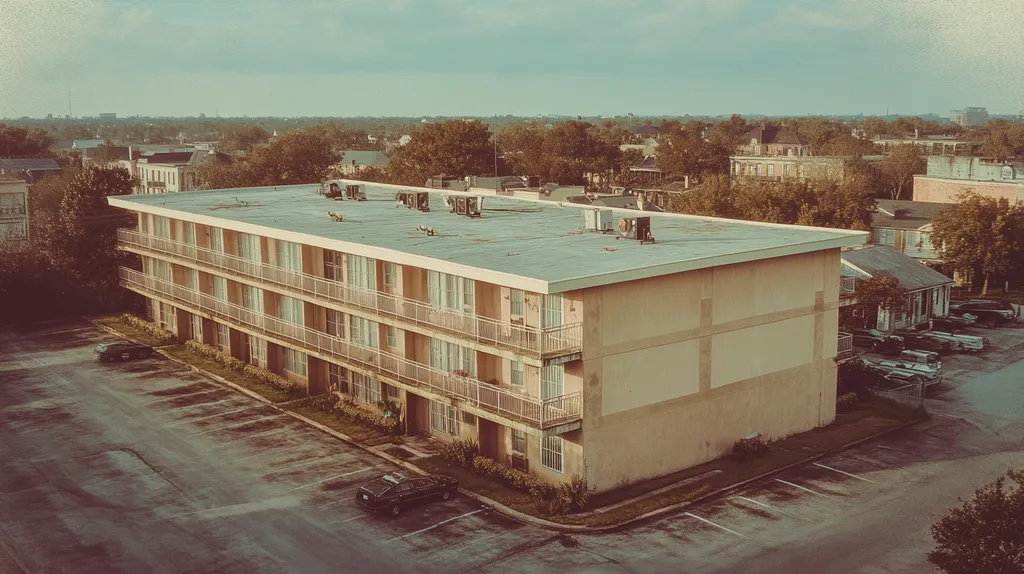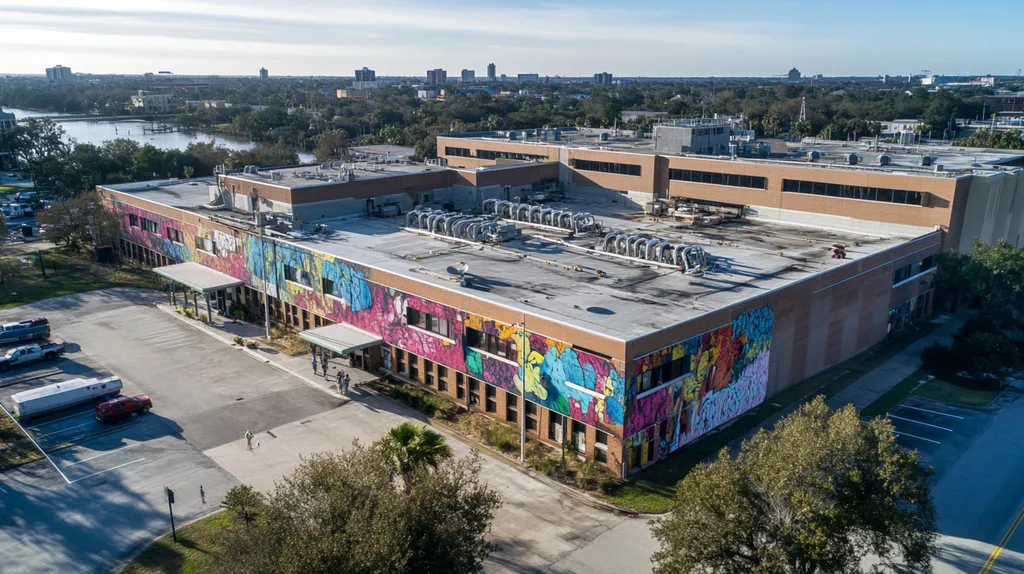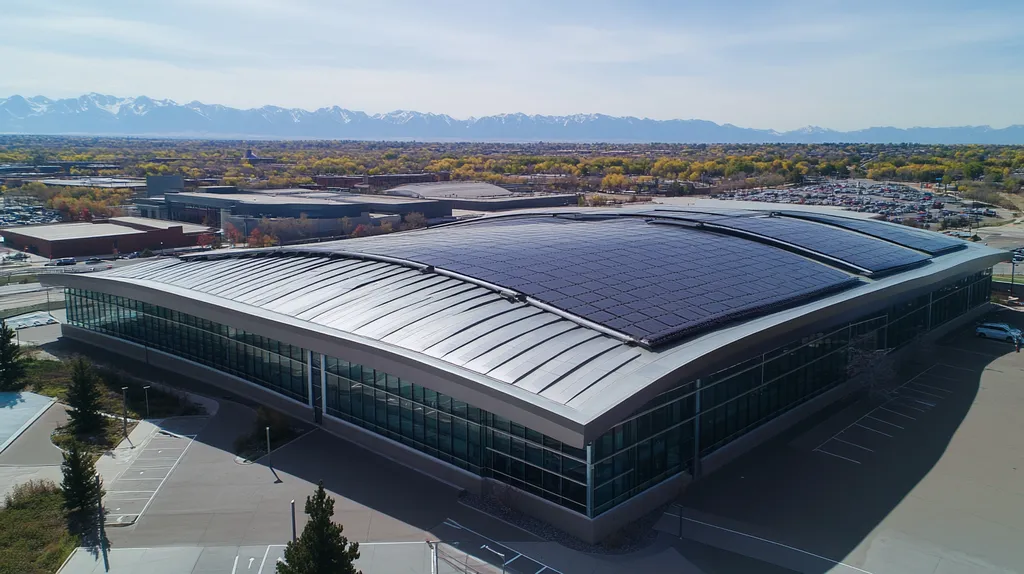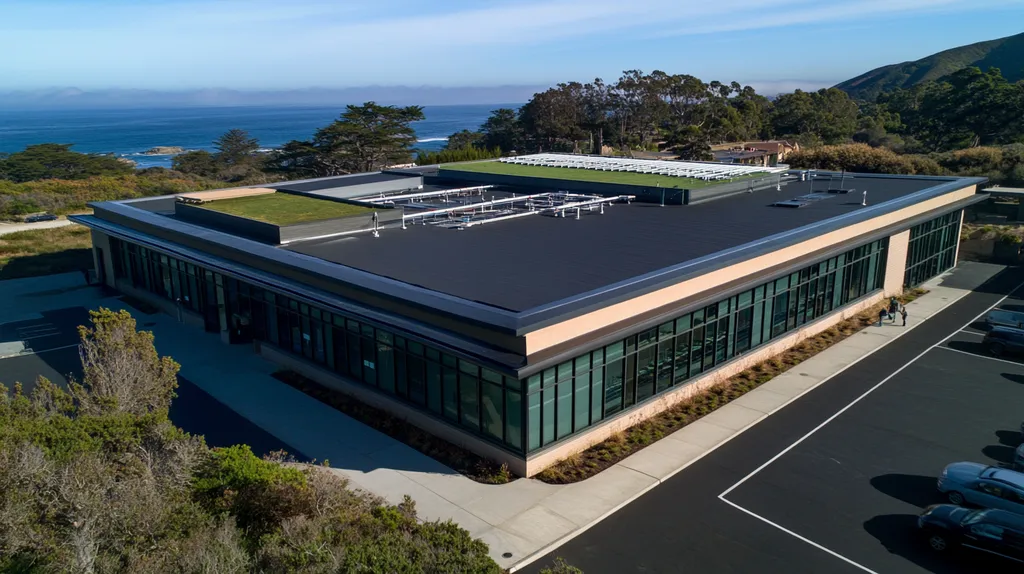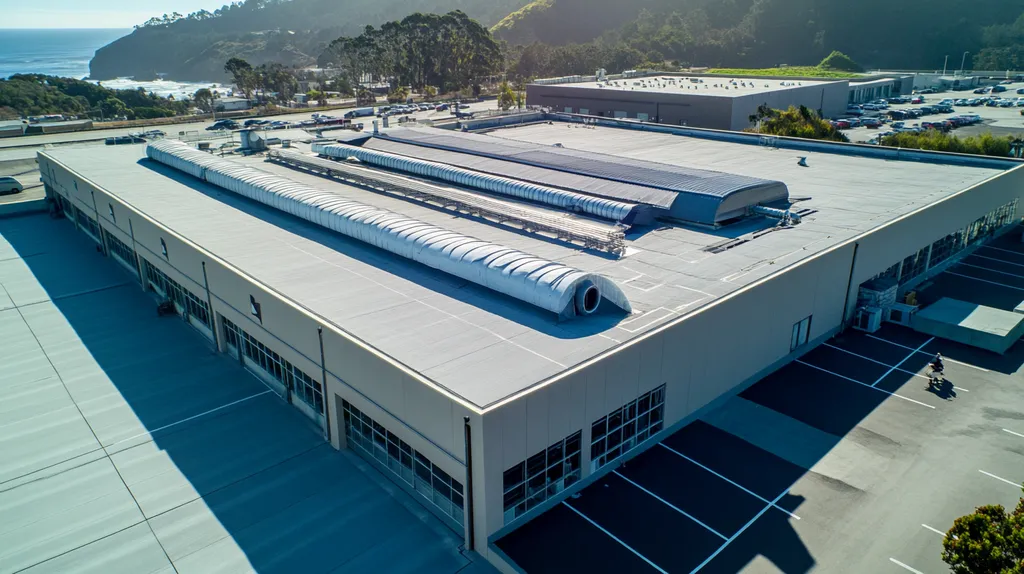Welcome to today’s Battle Royale featuring two roofing heavyweights: “Silicone Roof Coatings” in the east corner versus “Polyurethane Roof Coatings” in the west!
Tonight’s showdown pits these contenders against each other across six punishing rounds designed to test every aspect of their performance for Commercial Roof Coating and Drainage Efficiency.
At stake? Millions in potential costs, decades of building protection, and the critical performance demands of modern commercial and industrial facilities.
Our professional judging panel will evaluate each round on technical merit, real-world performance, and value delivery. After all six rounds, we’ll declare our ultimate champion.
Ladies and gentlemen, facility managers and building owners… it’s time to rumble!
ROUND 1: INITIAL COSTS & INSTALLATION
Making the wrong choice in commercial roof coating systems can lead to premature failure, expensive repairs, and disrupted business operations. Every day of delay in selecting and implementing the right solution increases vulnerability to weather damage and structural issues. Understanding the initial investment and installation requirements of silicone versus polyurethane coatings is crucial for making an informed decision that protects both your building and bottom line.
Material Expenses
Material costs represent a significant portion of any commercial roofing project’s budget, directly impacting return on investment. Understanding the true value proposition of each coating type requires looking beyond the price per square foot to consider coverage rates and material longevity.
Silicone roof coatings typically cost $3.00-4.00 per square foot for materials alone. However, they generally require only a single coat application and maintain their protective properties longer under UV exposure and extreme weather conditions.
Polyurethane coatings present a lower initial investment at $2.00-3.00 per square foot. Yet they often require multiple coats and primers, which can eliminate the apparent cost advantage while extending installation time.
For material expenses, the systems reach a TIE when accounting for coverage rates and application requirements.
Installation Complexity
Installation complexity directly affects labor costs and project timelines while determining the potential for application errors that could compromise system performance. The ease or difficulty of installation can make or break a coating project’s success.
Silicone coatings offer straightforward single-coat application with minimal surface preparation requirements. They can be applied in higher humidity conditions and have excellent adhesion to most roofing substrates without special primers.
Polyurethane systems demand extensive surface preparation and precise environmental conditions during application. They require multiple coats with specific recoat windows and are highly sensitive to moisture during installation.
Given their simpler application requirements and greater installation flexibility, silicone coatings hold the clear ADVANTAGE.
Project Timeline
Extended installation periods increase exposure to weather risks and can severely impact business operations. Fast-tracking installation without compromising quality is essential for minimizing disruption and protecting the facility.
Silicone coating projects typically complete in half the time of comparable polyurethane installations. Their single-coat application and rapid cure times allow for same-day rain resistance and faster project completion.
Polyurethane systems require longer cure times between coats and demand specific temperature and humidity conditions that can extend project duration. Weather delays and coating sensitivity can stretch timelines unpredictably.
With faster completion times and fewer weather restrictions, silicone coatings demonstrate a clear ADVANTAGE in project timeline efficiency.
ROUND 1 WINNER: Silicone Coatings
ROUND 2: DURABILITY & LIFESPAN
When commercial roofs fail prematurely, the consequences ripple through entire operations. Water damage alone costs businesses billions annually in repairs, inventory losses, and operational disruptions. The durability and lifespan of your roof coating system directly impacts your facility’s protection against these threats and determines whether you’ll face frequent replacements or enjoy decades of reliable performance.
Durability Against Environmental Factors
Your roof coating must withstand a relentless assault from UV radiation, temperature extremes, precipitation, and physical stress. Understanding how different systems hold up under these conditions is crucial for long-term facility protection.
Silicone coatings excel in UV resistance and maintain their protective properties even after decades of sun exposure. They resist oxidation, chalking, and cracking while handling ponding water without degradation.
Polyurethane coatings provide superior impact resistance and excellent tensile strength. However, they can become brittle over time and show reduced performance when repeatedly exposed to standing water.
For overall environmental durability, silicone coatings demonstrate a clear ADVANTAGE due to their superior weathering characteristics and resistance to degradation.
Lifespan Under Various Conditions
The expected service life of your coating system directly affects maintenance planning and lifecycle costs. Regional climate variations and specific facility conditions can dramatically impact performance longevity.
Silicone coatings typically maintain their protective properties for 15-25 years with minimal thickness loss. Their molecular structure remains stable even in extreme temperatures, helping preserve performance characteristics throughout their service life.
Polyurethane systems generally last 15-20 years when properly maintained. Their performance can vary significantly based on exposure conditions, with faster degradation in areas experiencing frequent thermal cycling or moisture exposure.
Given their comparable service life potential under ideal conditions, this category results in a TIE.
Maintenance Impact on Longevity
Regular maintenance requirements significantly affect both immediate costs and long-term performance. The frequency and complexity of required upkeep can make or break your coating system’s actual lifespan.
Silicone coatings are virtually maintenance-free, requiring only periodic inspections and basic cleaning. Their resistance to dirt pickup and biological growth minimizes cleaning requirements, while their chemical stability reduces the need for repairs.
Polyurethane systems demand more frequent maintenance inspections and may require occasional recoating in high-wear areas. Their greater sensitivity to moisture intrusion necessitates prompt attention to any surface damage.
Given their minimal maintenance requirements and lower lifecycle costs, silicone coatings claim the ADVANTAGE in this category.
ROUND 2 WINNER: Silicone Coatings
ROUND 3: PERFORMANCE FACTORS
Every day, commercial roofs face punishing conditions that can compromise their integrity and lead to costly failures. The wrong coating choice can result in premature degradation, leaving buildings vulnerable to water damage that disrupts operations and threatens valuable assets. Understanding how different coating systems perform under real-world conditions is crucial for making decisions that protect both property and profitability.
Weather Resilience
A roof coating’s ability to withstand extreme weather conditions directly impacts its protective capabilities and longevity. Harsh UV exposure, thermal cycling, and precipitation can rapidly degrade inferior systems, leading to expensive repairs and replacement.
Silicone coatings maintain their physical properties even after prolonged UV exposure and extreme temperature fluctuations. Their molecular structure remains stable through repeated freeze-thaw cycles, and they resist degradation even when subjected to ponding water for extended periods.
Polyurethane coatings offer good initial weather resistance but can become brittle over time when exposed to intense UV radiation. They show particular vulnerability to ponding water conditions and may require additional maintenance in areas with frequent precipitation.
Given their superior stability under diverse weather conditions, silicone coatings demonstrate a clear ADVANTAGE in this category.
Impact and Abrasion Resistance
Commercial roofs must withstand frequent foot traffic, equipment maintenance, and potential impacts from debris. Coating systems that can’t maintain their integrity under these stresses risk exposing the underlying roof structure to damage.
Silicone coatings provide moderate impact resistance and can self-level to maintain their protective barrier. However, they can be more susceptible to surface damage from sharp objects and may show wear patterns in high-traffic areas.
Polyurethane systems excel in impact resistance and offer superior protection against punctures and abrasion. Their tougher surface characteristics make them particularly effective in areas with regular maintenance traffic or exposure to mechanical equipment.
With their enhanced durability against physical stress, polyurethane coatings claim the ADVANTAGE in impact and abrasion resistance.
Chemical Resistance
Industrial environments often expose roof surfaces to chemical pollutants, exhaust emissions, and atmospheric contaminants. A coating’s ability to resist chemical degradation directly affects its protective longevity.
Silicone coatings demonstrate exceptional resistance to most chemical exposures, maintaining their protective properties even when exposed to acid rain or industrial emissions. Their inert chemical structure prevents degradation from most environmental pollutants.
Polyurethane systems show good initial chemical resistance but may degrade more quickly when exposed to certain industrial chemicals or persistent pollutants. Their chemical bonds can break down over time, potentially compromising the coating’s protective capabilities.
Based on their superior long-term chemical stability, silicone coatings hold the ADVANTAGE in this category.
ROUND 3 WINNER: SILICONE COATINGS
ROUND 4: MAINTENANCE REQUIREMENTS
Every hour of delayed maintenance on a commercial roof increases the risk of catastrophic failure. Water infiltration through compromised coatings can destroy inventory, damage equipment, and halt operations within minutes. Understanding the maintenance demands of different coating systems is crucial for protecting your facility investment and preventing costly emergencies.
Routine Inspection Requirements
Regular inspections serve as an early warning system for potential roofing issues. The frequency and complexity of these inspections directly impact maintenance budgets and facility operations.
Silicone coatings typically require only bi-annual professional inspections. Their stable chemical structure and resistance to environmental degradation means fewer inspection points and simpler evaluation protocols.
Polyurethane systems demand quarterly inspections due to their vulnerability to UV damage and moisture infiltration. Each inspection must carefully evaluate coating integrity, especially around seams and penetrations.
Given their reduced inspection frequency and simpler evaluation requirements, silicone coatings demonstrate a clear ADVANTAGE.
Cleaning and Preventive Care
Maintaining coating performance requires regular cleaning to prevent debris accumulation and drainage issues. The effort and frequency of cleaning directly affects both maintenance costs and coating longevity.
Silicone coatings feature exceptional dirt release properties that minimize cleaning requirements. Their smooth surface prevents organic growth and allows natural rainfall to remove most accumulated debris.
Polyurethane coatings tend to accumulate surface dirt and may support biological growth in humid conditions. They require more frequent cleaning with specialized solutions to maintain reflectivity and prevent degradation.
Based on their self-cleaning properties and reduced maintenance needs, silicone coatings hold the ADVANTAGE.
Repair and Restoration
When damage occurs, the ease and effectiveness of repairs significantly impact both immediate costs and long-term performance. The compatibility of repair materials and success rates of restoration efforts determine system reliability.
Silicone coatings offer excellent repair compatibility with minimal surface preparation. Their chemical stability allows new material to bond effectively with existing coating, even years after initial application.
Polyurethane repairs often require extensive surface preparation and precise application conditions. Their chemical sensitivity can complicate touch-ups and make successful repairs more challenging.
For their superior repair flexibility and higher success rates, silicone coatings claim the ADVANTAGE.
ROUND 4 WINNER: Silicone Coatings
ROUND 5: SUSTAINABILITY CREDENTIALS
Every commercial roof coating choice has lasting environmental implications that extend far beyond the building itself. Poor sustainability choices in roofing materials contribute to urban heat islands, increased energy consumption, and thousands of tons of landfill waste annually. Understanding the environmental impact of silicone versus polyurethane coatings is crucial for meeting both corporate sustainability goals and regulatory requirements.
Energy Efficiency
A roof coating’s ability to reflect solar radiation and reduce heat absorption directly impacts building energy consumption and operating costs. The right choice can reduce cooling loads by up to 30% during peak summer months.
Silicone coatings maintain exceptional solar reflectivity throughout their service life, with minimal degradation even after years of UV exposure. Their stable molecular structure preserves reflective properties without requiring additional maintenance or recoating.
Polyurethane coatings offer good initial reflectivity but typically show significant degradation over time, especially in high-UV environments. Their declining performance often requires more frequent recoating to maintain energy efficiency benefits.
Given their superior long-term reflective properties, silicone coatings demonstrate a clear ADVANTAGE.
Environmental Impact
The production, application, and eventual disposal of roof coatings can significantly affect their overall environmental footprint. Manufacturing processes and VOC emissions during installation present particular concerns for environmentally conscious facility managers.
Silicone coatings feature low VOC formulations and require minimal chemical solvents during application. Their single-coat application reduces material waste and transportation emissions, while their longer service life minimizes replacement frequency.
Polyurethane systems often contain higher VOC levels and require multiple coating layers, increasing both material consumption and application emissions. Their more frequent replacement schedule results in greater cumulative environmental impact.
Based on their reduced environmental footprint, silicone coatings claim the ADVANTAGE.
Resource Conservation
The efficient use of materials and potential for recycling directly affect a coating system’s sustainability profile. Minimizing waste and maximizing reuse opportunities are increasingly critical factors in roofing decisions.
Silicone coatings can often be recoated directly over existing layers, eliminating tear-off waste. Their simple formulation and inert nature make them more compatible with recycling programs at end-of-life.
Polyurethane coatings typically require complete removal before reapplication, generating significant waste. Their complex chemical composition makes recycling more challenging and often results in materials being sent to landfills.
For their superior resource efficiency and recycling potential, silicone coatings hold the ADVANTAGE.
ROUND 5 WINNER: SILICONE COATINGS
ROUND 6: SPECIALIZED APPLICATIONS
Commercial roofing challenges demand specialized solutions for unique facility conditions. Every year, inadequate coating choices in specialized applications lead to millions in repair costs and business disruptions. Whether protecting against chemical exposure in manufacturing plants, handling extreme foot traffic in distribution centers, or battling severe weather conditions, choosing the wrong coating system can compromise facility operations and safety.
High-Traffic Areas
Commercial roofs frequently serve as platforms for maintenance access, equipment servicing, and regular inspections. The coating system must withstand constant foot traffic and equipment movement without compromising its protective properties.
Silicone coatings offer good initial resistance to foot traffic but can show wear patterns in high-traffic zones. Their softer surface structure may require additional protection in areas with frequent maintenance activity.
Polyurethane systems excel in traffic resistance, maintaining their structural integrity even under heavy use. Their superior tensile strength and abrasion resistance make them ideal for roofs requiring frequent access.
Given their superior durability under repeated physical stress, polyurethane coatings demonstrate a clear ADVANTAGE.
Industrial Exposure
Manufacturing facilities, processing plants, and industrial complexes present unique challenges for roof coatings. Exposure to chemicals, exhaust emissions, and process byproducts can rapidly degrade inadequate coating systems.
Silicone coatings provide moderate resistance to common industrial pollutants but may show accelerated degradation when exposed to certain chemical compounds. Their performance can vary significantly based on specific exposure conditions.
Polyurethane coatings offer exceptional resistance to industrial chemicals and maintain their protective properties even in harsh environments. Their robust chemical structure provides superior defense against manufacturing emissions and chemical exposure.
For their enhanced protection against industrial contaminants, polyurethane coatings claim the ADVANTAGE.
Extreme Weather Zones
Regions experiencing severe weather conditions demand coating systems capable of withstanding thermal shock, high winds, and intense UV exposure. Coating failure in these environments can lead to catastrophic damage.
Silicone coatings maintain exceptional stability under extreme UV exposure and temperature fluctuations. Their moisture resistance and flexibility allow them to accommodate building movement without compromising protection.
Polyurethane systems can become brittle under prolonged UV exposure and may require additional protective measures in extreme environments. Their performance can degrade more quickly in areas with severe temperature cycling.
Based on their superior weather resistance, silicone coatings hold the ADVANTAGE.
ROUND 6 WINNER: POLYURETHANE COATINGS
AND THE WINNER IS…
After six grueling rounds of technical evaluation, we have our verdict. In a stunning display of dominance, taking four out of six championship rounds, SILICONE ROOF COATINGS emerges as our undisputed champion!
Silicone coatings delivered knockout performances in installation efficiency, durability, maintenance requirements, and sustainability. Its superior UV resistance, minimal maintenance demands, and exceptional weather resilience proved unbeatable in protecting commercial properties.
But don’t count polyurethane out completely! This seasoned contender showed impressive strength in Round 6, dominating specialized applications where high traffic resistance and industrial chemical exposure are critical. For facilities requiring superior impact resistance or facing harsh chemical environments, polyurethane remains a formidable choice.
IMPORTANT NOTICE: While this battle has crowned a champion, every building faces unique challenges. Local climate conditions, facility operations, and specific substrate requirements can all impact coating performance. Property owners should partner with qualified roofing professionals to evaluate their particular situation and requirements before making a final selection.
Ladies and gentlemen, in the high-stakes arena of commercial roofing, victory goes not just to the strongest contender, but to those who strategically match their facility’s specific needs with the right coating’s capabilities. Choose wisely – your building’s future depends on it!
FREQUENTLY ASKED QUESTIONS
Q. What are the initial costs for commercial roof coatings?
A. The costs vary between silicone and polyurethane coatings. Silicone typically ranges from $3.00-4.00 per square foot, requiring only a single coat. Polyurethane costs $2.00-3.00 but may need multiple coats, potentially increasing total expenses.
Q. How long do commercial roof coatings last?
A. Silicone coatings generally last between 15-25 years due to their stability in harsh conditions. Polyurethane systems can last 15-20 years but may degrade faster based on exposure to moisture and temperature variations.
Q. Which coating is better for water resistance in commercial roofs?
A. Silicone coatings have superior water resistance and maintain their protective properties even under ponding conditions. Polyurethane can become brittle over time when exposed to standing water, leading to potential issues.
Q. How often should I inspect a commercial roof coating?
A. Silicone coatings usually require bi-annual inspections due to their durability. In contrast, polyurethane coatings need more frequent inspections, often quarterly, to monitor for UV damage and moisture issues.
Q. What is the environmental impact of roof coatings?
A. Silicone coatings typically have a lower environmental footprint due to low VOC emissions and reduced material waste. Polyurethane coatings often have higher VOC levels and require multiple applications, increasing their overall environmental impact.
Q. Can I recoat over existing commercial roof coatings?
A. Yes, silicone coatings can often be recoated directly over existing layers without removal, minimizing waste. However, polyurethane typically requires complete removal before reapplication, generating more waste in the process.
Q. Which coating withstands high foot traffic better?
A. Polyurethane coatings excel in high-traffic areas due to their exceptional abrasion resistance. Silicone coatings can exhibit wear in high-traffic zones and may require additional protective measures to maintain their integrity.

